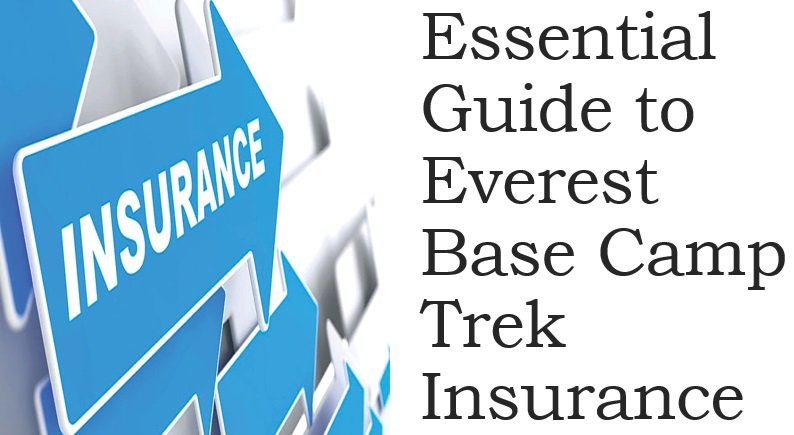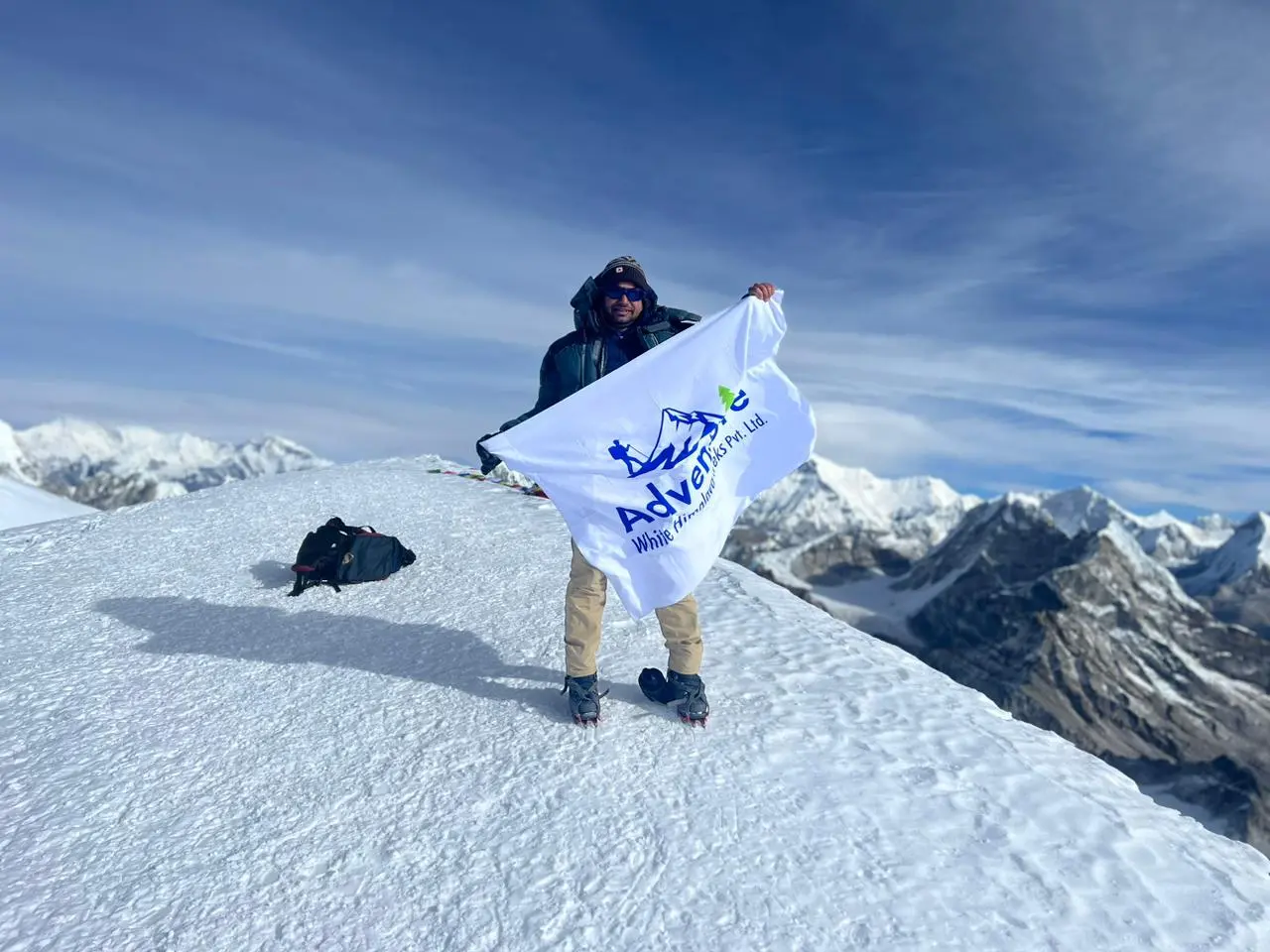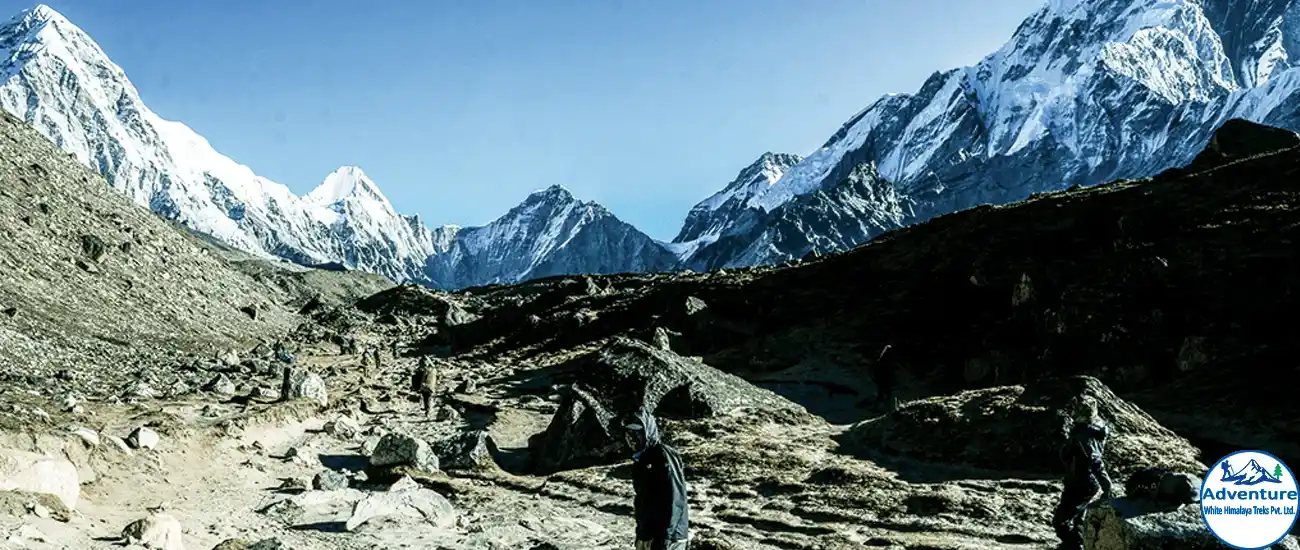Do you have any plans to visit Nepal?

Essential Guide to Everest Base Camp Trek Insurance
Beyond the Summit: Your Essential Guide to Everest Base Camp Trek Insurance
Going on the Everest Base Camp trek is a dream for many adventure lovers. Located in the heart of the Himalayas, this journey offers amazing views, tough climbs, and a huge sense of achievement. Every year, thousands of people take on this famous path, hoping to stand at the base of the world’s highest mountain.
But while the trek is exciting, it also comes with risks. From altitude sickness to unexpected weather changes, you can face many challenges. That’s where travel insurance becomes important.
Travel insurance isn’t just an extra cost—it’s a must-have for anyone trekking through the rough terrain of Everest. It protects you financially in emergencies, covers medical costs, trip cancellations, and other surprises that might ruin your adventure. With the right insurance, you can focus on the amazing experience without worrying about what could go wrong.
In this guide, we’ll cover everything you need to know about insurance for the Everest Base Camp trek. We’ll talk about why you need it, what kind of coverage to get, the best plans, and whether insurance is required. We’ll also share expert advice, tips, and stories to help you make smart choices for your trip insurance.
Are you ready to make sure your Everest adventure is both safe and unforgettable? Let’s get started!
Why Do I Need Insurance for the Everest Base Camp (EBC) Trek?

The Everest Base Camp trek is one of the most famous and challenging adventures in the world. It attracts people from all over who want to see the incredible scenery, experience the rich culture, and stand at the foot of the world’s highest peak. But it also comes with serious risks, making travel insurance necessary for anyone attempting this trek.
Possible Risks and Dangers
The Everest Base Camp trek is not an easy walk. Here are some dangers you might face:
- Altitude Sickness: As you climb higher, there’s less oxygen, which can make you feel sick with headaches, nausea, or worse. In serious cases, it can be life-threatening and require an emergency rescue.
- Weather Changes: The weather in the Himalayas is unpredictable. Sudden snowstorms, extreme cold, or heavy rains can create dangerous situations, causing delays, injuries, or forcing you to stop your trek.
- Injuries and Accidents: Hiking through rough paths increases the risk of accidents like sprains or broken bones. Medical care in the area is limited, and getting proper help can be hard and expensive.
- Trip Cancellations: Personal emergencies, health problems, or unexpected changes in plans could make you cancel or shorten your trek, which can cost a lot of money.
- Medical Emergencies: If you get very sick or hurt, the cost of medical care in remote areas is very high. Getting transported to a hospital can also be expensive and difficult.
How Travel Insurance Can Help
Travel insurance for the Everest Base Camp trek gives you financial protection from these risks. Here’s how it can help:
- Emergency Medical Costs: If you have a medical emergency while trekking, your insurance can pay for treatment, evacuation, and hospital bills. This ensures you get the help you need without worrying about the costs.
- Trip Cancellation Protection: If you have to cancel or end your trek early because of a family emergency or sickness, insurance can refund your non-refundable costs and reduce your financial losses.
- Emergency Evacuation: If you have a serious health problem or injury, insurance can cover the cost of an emergency rescue from remote areas to a hospital, which can be important for your safety.
- Trip Disruption: If your trek is cut short due to bad weather or other problems, insurance can help pay for extra expenses or losses caused by the interruption.
Peace of Mind
The best thing about travel insurance is the peace of mind it gives you. Knowing that you’re financially protected lets you enjoy the trek without constantly worrying about what could go wrong. You can fully enjoy your adventure, confident that you’re prepared for any unexpected issues that might come up.
In short, while the Everest Base Camp trek is a once-in-a-lifetime adventure, it’s important to be ready for the risks. Getting good travel insurance makes sure you’re supported both financially and emotionally, letting you start this amazing journey with confidence and peace of mind.
Types of Everest base camp (EBC) Insurance Coverage You Need
When getting ready for the Everest Base Camp trek, having the right insurance is super important. It keeps you safe and worry-free during your adventure. Here’s a simple breakdown of the main types of insurance you should think about:
Medical Insurance
What It Covers: Medical insurance helps pay for any injuries or sickness you might get while trekking. This includes hospital stays, doctor visits, medicine, and emergency treatments.
Why It’s Important:
Covers Health Risks: Trekking at high altitudes can make you sick, especially with altitude sickness, which needs special care.
Saves Money: Medical care in remote places can be expensive, and this insurance helps cover those costs.
Gives Peace of Mind: You can enjoy your trek without worrying about what happens if you get sick.
Example: If you get really bad altitude sickness and need to see a doctor fast, medical insurance will cover your treatment and get you to a hospital without you paying a lot of money.
Evacuation Coverage
What It Covers: Evacuation insurance helps pay for emergency transport if you need to be quickly taken off the trek due to health problems, bad weather, or other sudden problems.
Why It’s Important:
Emergency Help: Covers the cost of getting you to the nearest hospital, which can be expensive.
Quick Response: Helps you get out of danger quickly, which is really important in serious situations.
Example: If you break your leg while trekking, evacuation insurance will pay for a helicopter or other transport to take you to a hospital where you can get proper care.
Trip Cancellation Coverage
What It Covers: This type of insurance gives you your money back for things you paid for but can’t use if you have to cancel or stop your trek because of an emergency, sickness, or natural disasters.
Why It’s Important:
Protects Your Money: Helps you get back money you spent on things like flights, trek permits, or hotel bookings.
Flexibility: You don’t lose everything if your plans suddenly change.
Example: If a family member gets very sick and you have to cancel your trip, this insurance will pay you back for your flights and permits that you can’t use.
Liability Coverage
What It Covers: Liability insurance protects you if you accidentally hurt someone else or damage something during your trek. It covers legal costs and paying for any damages.
Why It’s Important:
Covers Legal Costs: If someone says you hurt them or broke something, this insurance pays for legal fees and other costs.
Peace of Mind: You won’t have to worry about unexpected legal problems.
Example: If you accidentally break something at a lodge or cause an injury to another trekker, liability insurance will help cover the costs of fixing it or paying for legal claims.
Conclusion
Getting the right insurance for your Everest Base Camp trek is key to staying safe and avoiding money problems if things go wrong. Medical insurance, evacuation coverage, trip cancellation coverage, and liability coverage all help protect you from unexpected situations. With good insurance, you can enjoy your trek without worry and focus on the amazing experience of trekking to Everest Base Camp.
Everest Trek Insurance Recommendations
When you’re picking travel insurance for your Everest Base Camp trek, it’s important to choose a company that understands the special risks of high-altitude trekking. Here are some good insurance providers that focus on adventure and trekking, along with what their plans offer:
World Nomads
Key Features:
- Adventure Coverage: Offers insurance for adventure travelers, including trekking up to 6,000 meters (about 19,700 feet).
- Medical Protection: Covers emergency medical costs, including evacuation.
- Trip Cancellation: Helps if you have to cancel or interrupt your trip.
- 24/7 Help: Provides emergency assistance any time, day or night.
Why Choose Them:
World Nomads is great for covering adventurous activities and high-altitude trekking. Their plans are flexible and offer good help if you run into trouble.
Global Rescue
Key Features:
- High-Altitude Coverage: Covers trekking up to 7,000 meters (about 23,000 feet), which is more than many other plans.
- Evacuation Services: Includes airlift and transport to the closest medical facility.
- 24/7 Medical Help: Provides constant support for medical and security emergencies.
Why Choose Them:
Global Rescue is known for its excellent evacuation services and is perfect for extreme adventures. They offer a lot of protection in tough conditions.
Travel Guard
Key Features:
- Adventure Coverage: Includes trekking at high altitudes, with options for other sports.
- Medical Protection: Covers emergency medical expenses and evacuation.
- Trip Cancellation: Helps if your trip gets canceled or interrupted for many reasons.
Why Choose Them:
Travel Guard offers flexible plans that you can adjust for high-altitude trekking. They’re known for great customer service and thorough coverage.
InsureMyTrip
Key Features:
- Compare Plans: Lets you compare different insurance plans from various companies, including those for adventure travel.
- Customizable Plans: You can personalize your insurance to fit your trekking needs.
- Comprehensive Coverage: Offers options for medical, evacuation, trip cancellation, and more.
Why Choose Them:
InsureMyTrip is great for finding the right plan by comparing different options. You can easily pick the best plan for your Everest trek.
Allianz Global Assistance
Key Features:
- Adventure Coverage: Covers high-altitude trekking and adventure sports.
- Medical and Evacuation: Includes emergency medical help and evacuation.
- Trip Protection: Offers coverage for trip cancellation, interruptions, and lost luggage.
Why Choose Them:
Allianz Global Assistance is well-known for offering strong protection for adventurous travelers and has a good reputation for reliable service.
Comparison and Things to Think About:
When picking insurance for your Everest Base Camp trek, keep these things in mind:
- Coverage Limits: Make sure the policy covers high-altitude trekking and includes enough medical and evacuation protection.
- Emergency Help: Look for plans that offer 24/7 emergency assistance in case something unexpected happens.
- Trip Cancellation: Check how well the plan covers cancellations or interruptions so you can get your money back if plans change.
- Cost: Compare the price of different plans to see what’s included and find one that fits your budget.
By thinking about your specific needs and comparing these options, you can choose the best insurance plan for your Everest Base Camp trek, making sure you stay safe and protected on your adventure.
Everest Base Camp (EBC) Trek Insurance Costs
Understanding how much insurance costs for your Everest Base Camp trek is important for planning your budget. Let’s look at what affects the cost, the average price, and some tips to find affordable options without losing good coverage.
Things That Affect Insurance Costs
Type of Coverage
- Medical Coverage: If the insurance has higher limits for medical and evacuation, it costs more. Plans that include high-altitude trekking are usually pricier.
- Evacuation Coverage: Plans with options like airlifting from remote areas cost more.
- Trip Cancellation: Adding coverage for canceling or stopping your trip also raises the price.
Duration
- The longer your trip, the higher the cost. Insurance for a short trek is cheaper than for a long one.
Age and Health
- Older trekkers or people with health conditions may pay more because they are at higher risk.
Adventure Activities
- Policies that cover risky activities like trekking at high altitudes usually cost more.
Deductibles
- If you choose a higher deductible (what you pay before the insurance kicks in), your monthly cost can be lower, but you’ll have to pay more if something happens.
Average Insurance Costs
- Basic Coverage: A basic plan that covers only medical and evacuation can cost between $100 to $200 for a two-week trek.
- Comprehensive Coverage: A full plan that includes medical, adventure sports, and trip cancellation can range from $250 to $500 or more.
- High-End Plans: The most extensive plans, covering high-altitude trekking and extra features, may cost more than $500.
Tips for Finding Affordable Insurance
- Compare Plans: Use websites like InsureMyTrip to compare insurance from different companies to get the best price.
- Customize Coverage: Only pay for the coverage you need. Skip extras that don’t apply to your trek.
- Look for Discounts: Some companies offer discounts for booking early or for multiple trips.
- Check the Details: Make sure the insurance covers high-altitude trekking and any other activities you plan.
Is Insurance Required for the Everest Base Camp Trek?
Is It Mandatory? No, travel insurance is not required by law, but it’s strongly recommended. Many trekking companies suggest or require you to have it when booking your trip.
Why You Need It: Even though it’s not required, trekking in the Himalayas has risks. Without insurance, you might end up paying a lot of money for medical emergencies or if you have to cancel your trip.
What the Experts Say
Adventure Travel Expert Sarah Thompson: “Insurance is a safety net every trekker needs. High-altitude trekking is unpredictable, and insurance gives you peace of mind.”
Insurance Advisor John Edwards: “For high-risk activities like Everest trekking, having complete coverage is important. You need to be ready for anything.”
Important Statistics
- Insurance Claims: Insurance claims for high-altitude trekking and evacuations have gone up 15% in the last five years. This shows why having insurance is so important.
- Medical Emergencies: About 25% of trekkers to Everest Base Camp need medical help or evacuation during their trip.
- Trip Cancellations: Around 10% of trekkers end up canceling their trip for unexpected reasons, so having trip cancellation insurance is helpful.
Tips for Choosing the Right Plan
- Know Your Needs: Think about what coverage you need based on your health, how long your trek is, and what activities you plan to do.
- Read the Policy: Make sure you understand what the insurance covers, especially for high-altitude trekking and emergency evacuation.
- Personal Stories: One trekker said, “I had to use my evacuation insurance when I got altitude sickness. The insurance covered my helicopter ride, which saved me from a huge bill.”
Conclusion
Trekking to Everest Base Camp is exciting but comes with risks. One of the most important things you can do to prepare is to get the right travel insurance.
Key Points to Remember:
- Why It’s Important: The trek is risky with things like altitude sickness and bad weather. Insurance protects you from medical bills, evacuation costs, and more.
- What to Cover: Make sure your insurance covers medical, evacuation, trip cancellation, and even liability for unexpected situations.
- Which Company to Pick: Choose a trusted insurance company that knows about adventure travel. Compare plans to find the best one for you.
- Cost of Insurance: Costs depend on things like coverage type, age, and trip length. Find a plan that gives you both protection and a fair price.
Is It Mandatory? No, but trekking companies strongly recommend it because of the many risks involved.
What the Experts Say: Insurance professionals agree that having good coverage is key to handling emergencies.
Final Thought
Getting travel insurance isn’t just an extra cost; it’s a smart way to protect yourself. The Everest region is tough, and having insurance can save you a lot of trouble. Research different plans, compare them, and pick one that works for you. With the right insurance, you can focus on enjoying your trek while staying safe. Happy trekking!



